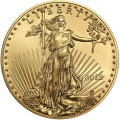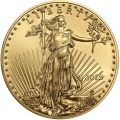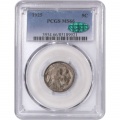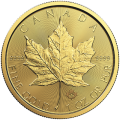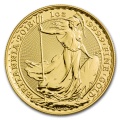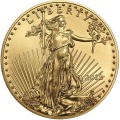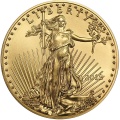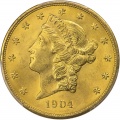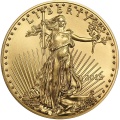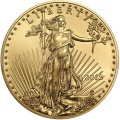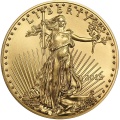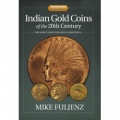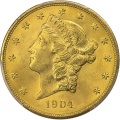November 2022 - Week 3 Edition
Gold Continues Upward Its Trend
Gold rose strongly in the last weeks due to slower-than-expected inflation increases, first in the Consumer Price Index (CPI), released last Thursday (November 10) and then again Tuesday morning (November 15) after the release of the much lower-than-expected Producer Price Index (PPI). Gold surged from $1,770 to $1,783 in less than an hour after the 8:30 am (EST) release of the 0.2% PPI October PPI gain (vs. 0.4% expected). Later, gold settled back into the $1,770s. In a contrary move, bitcoin is down about 20%, due mostly to a collapse of the FTX crypto exchange.
Why is the World’s Greatest “Inflation Hedge” Rising in the Face of Lower Inflation?
The big mystery to some investors is why gold – this great historic inflation hedge – is rallying so strongly in the face of the dramatically lower inflation rates announced for October. However, it is no mystery to us. Lower inflation means the Federal Reserve will likely stop raising interest rates sooner than expected, which is bullish for both gold and stocks. Reflecting new hopes for lower rates, the U.S. Dollar Index fell sharply, down 6% since November 3. The 10-Year U.S. Treasury yield also fell sharply, from 4.15% on November 9 to 3.82% on November 15.
The stock market has also recovered strongly. Some say the market is up due to last Tuesday’s election results but the election results are far below the “Red Wave” most Republicans anticipated. The GOP will be lucky to gain a slim majority in the House but have certainly lost a prime opportunity for winning back the Senate. For that reason, the stock market actually FELL about 2.5% last Wednesday, the morning after the election. It took the low inflation news on Thursday to lift the stock market since economics still “Trump” politics in the stock market.

Gold gained more ground after the election than either of the major stock indexes and gold rose every day, by a total of $90 (+5.4%). By contrast, the S&P 500 gained 3.37% and the Dow only rose 1.13%. Part of gold’s supremacy in the last week is the U.S. Dollar Index losing 6% since November 3, sinking from over 113 on November 3 to 106 on November 15. This was due mostly to lower inflation and expectations of fewer rate increases, hence lower dollar demand. Gold’s 9% rise from $1,629 (on November 3) to $1,775 this week is a mirror image of the fall in the dollar. I urge you to call your account representative to take advantage of this increase as gold continues to rise.
If not the elections, what changed the investment landscape so dramatically last week?
The first and most important cause was inflation coming in cooler than expected in October:
-
Last Thursday, the October Consumer Price Index (CPI) came in at just +0.4%, substantially below economists’ consensus expectation of a 0.6% increase. The core CPI, excluding food and energy, rose just 0.3%, also well below the consensus expectation of 0.5%. In the past 12 months, the core CPI rose 6.3%, the first time since July that the core CPI has decelerated,
-
On Tuesday, we learned the Producer Price Index (PPI) rosejust 0.2% in October, half the 0.4% estimate. There was a 0.1% decline in services, the first such decline in two years.
Then there was the collapse of the cybercurrency markets due to the failure of a major exchange and some difficulty getting one’s electronic assets back into their “wallet.” This caused some panic selling in Bitcoin, Ethereum and other cyber-imitators of gold, underlining the long-term role of gold as mankind’s most reliable store of wealth for 5,000 years, as opposed to a decade!
Bitcoin peaked at $67,567 on November 8, 2021. Exactly a year later, on election day, according to Yahoo Finance, it traded at $20,600 at 8:00 am, slipping to $15,682 within 30 hours, losing almost 77% in a year. A year ago, the cryptocurrency universe was valued at around $3 trillion. Today, it is off 70% at about $900 billion, according to CNBC, mostly due to the Chapter 11 filing by FTX, a major cryptocurrency exchange, with liabilities that may be up to $8 billion.
Tour One of the Four Operating Mints – or Historic Mints, or the BEP
When I was growing up collecting coins, there were only three operating Mints and two mint marks. There was no “P” for the Philadelphia Mint, since it was the original Mint and “didn’t need no stinkin’ badge” to proclaim its supremacy. So, we were on the lookout for a “D” mark for the Denver Mint or “S” for the San Francisco Mint, since the New Orleans Mint closed in 1909, and the West Point Mint hadn’t opened.
Although only two of the current Mints offer tours, if you are ever in Denver or Philadelphia I urge you to drop in and take the tours. The historic Mint in New Orleans (opened 1838) has been turned into a museum but is a valuable tour and still maintains some of its original coin minting equipment. Exhibits from the Carson City, Nev. Mint (opened in 1870) are now in the Nevada State Museum. For a history of numismatic coins on display, visit the National Numismatic Collection at the Smithsonian’s National Museum of American History in Washington D.C., for which I have consulted in the past. While in D.C., also check out the paper-money colossus at the Bureau of Engraving and Printing (BEP). This is where your currency is printed.
As time permits, we want to take you on a virtual written tour of operating mints, one at a time, starting next week.

Important Disclosure Notification: All statements, opinions, pricing, and ideas herein are believed to be reliable, truthful and accurate to the best of the Publisher's knowledge at this time. They are not guaranteed in any way by anybody and are subject to change over time. The Publisher disclaims and is not liable for any claims or losses which may be incurred by third parties while relying on information published herein. Individuals should not look at this publication as giving finance or investment advice or information for their individual suitability. All readers are advised to independently verify all representations made herein or by its representatives for your individual suitability before making your investment or collecting decisions. Arbitration: This company strives to handle customer complaint issues directly with customer in an expeditious manner. In the event an amicable resolution cannot be reached, you agree to accept binding arbitration. Any dispute, controversy, claim or disagreement arising out of or relating to transactions between you and this company shall be resolved by binding arbitration pursuant to the Federal Arbitration Act and conducted in Beaumont, Jefferson County, Texas. It is understood that the parties waive any right to a jury trial. Judgment upon the award rendered by the Arbitrator may be entered in any court having jurisdiction thereof. Reproduction or quotation of this newsletter is prohibited without written permission of the Publisher.

